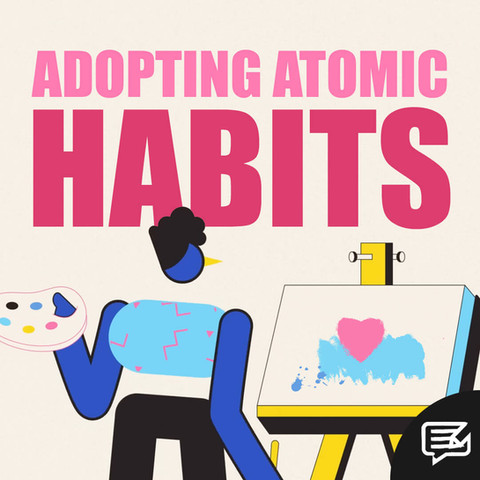
17.05.22
TACKLING DYSLEXIA WITH AI
I utilise language in almost all aspects of my daily life. I rely heavily on my ability to read, understand and interpret, whether that be managing complex development projects at work, creating educational videos for my iluli video channel, or teaching my kids their times tables on an evening.
But not everyone enjoys a straightforward relationship with the written word.



According to the British Dyslexia Association, the number of individuals with dyslexia in the UK is around 10%, with 4% of population at the severe end of the dyslexia spectrum. On a global scale, the number of individuals affected could be as high as 17%.
The British Dyslexia Association defines dyslexia as:
“…a learning difficulty that primarily affects the skills involved in accurate and fluent word reading and spelling. Characteristic features of dyslexia are difficulties in phonological awareness, verbal memory and verbal processing speed. Dyslexia occurs across the range of intellectual abilities. It is best thought of as a continuum, not a distinct category, and there are no clear cut-off points.”
Common characteristics of dyslexia include difficulties with memory, organisation, writing, reading and time management. Since the advent of the internet (and later, smartphones), technological advancements in these areas have come thick and fast. Speech recognition software, text-to-speech software, spell checkers and smart pens are just a few examples of assistive technology that has helped to break down barriers.
But what about artificial intelligence? Does it have a greater role to play in helping those with dyslexia? And what would that role look like?
I turned to Tabitha Goldstaub’s piece in The Observer to find out.
Of her early experience with dyslexia, Goldstaub wrote:
“I’m 10 years old. Minutes into a maths lesson and my palms have already begun to sweat. I’ve positioned myself in the back row, but the teacher walks up and down the aisles of the classroom, peering over our shoulders. I don’t understand the rules. The teacher’s voice becomes a blur, and I stare at the numbers on the board, willing them to make sense. I wasn’t a shy child, if anything I was bold and kind of brash, but I couldn’t ask for help. I didn’t have the language to explain what the numbers were doing to my brain.”
Nowadays, Goldstaub is a tech entrepreneur and co-founder of CognitionX, a market intelligence platform for AI. But not only does she work with AI, she relies on it too:
“I rely on apps such as SwiftKey and Grammarly as one might an old friend. SwiftKey in particular is a huge help in my day-to-day life. It’s an app for your smartphone keyboard that uses AI to make much better recommendations than the inbuilt spelling and grammar check. Even better is its new feature that turns my voice to text so I don’t have to type or leave a voice note when I’m struggling to find exactly the right way to say something. Grammarly is my go-to for my laptop. It combines rules, patterns, and AI deep learning techniques to help you improve your writing.
“The drawback is that if something goes wrong with either of these apps, I feel as I’m back in the classroom again, freefalling, my brain foggy, letters and numbers jumbled up. I worry I’m over reliant on these technologies, but I’m also thankful for their existence. Because they use machine learning, which operates by learning how I use the apps each time, we grow together. It’s a conundrum but one I’m conscious of and take into account every day.”
She adds:
“And this is why it’s important to note that not only am I looking for AI support, I’m looking for human support. The need for a conversation at the back of the class hasn’t been replaced by technology – it’s been augmented by it. Technology and people need to work in tandem.”
Goldstaub makes a valid point. It’s not wise to be overly reliant on technology.
Think back to the classic exchange between Joey, Chandler and Monica in Friends, when the former relied a little too heavily on his thesaurus when writing a recommendation letter to an adoption agency:
Joey: Finished my recommendation, and I think you'll be very, very happy…
Chandler: I don't... understand
Joey: Some of the words a little too sophisticated for you?
Monica: It doesn't make any sense.
Joey: Of course it does. It's smart. I used a thesaurus.
Chandler: On every word?
Joey: Yep!
Monica: What was this sentence originally?
Joey: Oh, "They're warm, nice people with big hearts."
Chandler: And that became, "They're humid, prepossessing Homo sapiens with full-sized aortic pumps."
Joey: And hey, I really mean it, dude.
Monica: Uh, Joey, I don't think we can use this.
Joey: Why not?
Monica: Well, because you signed it "Baby Kangaroo" Tribbiani.
The chances of a “Baby Kangaroo” moment happening outside the realms of fiction are surely zero, but it highlights what can happen when technology is employed incorrectly.
Tools to help manage and combat dyslexia are only one part of the puzzle. The other part is diagnosing dyslexia in the first place. It is in this field that Lexplore Analytics has an important role to play, with a little help from their ground-breaking eye-tracking technology. Their website explains:
“At Lexplore Analytics, we combine the latest in both AI and eye-tracking technology with the ‘human touch’ of good teachers. By analysing correlations and patterns in eye movement data, our machine learning models are able to quickly and objectively determine reading attainment.
“Some of these patterns might even elude most human beings or other computer programmes, therefore, their introduction into the classroom can help offer teachers an entirely different perspective when it comes to reading, as well as providing the valuable information needed in minutes.”
When asked about the roadmap for Lexplore in an article for Electronic Specifier, founder Frederik Wetterhall replied:
“We are at the embryonic stages of what artificial intelligence is capable of doing. There are many different areas where we see a great deal of potential to develop the analysis further in terms of predictions, indicators, languages, ages, coordination with other data, etc.
“Imagine having at your disposal a ten-year longitudinal study on the reading development in your district or school where you can analyse initiatives, interventions and teaching methods, as well as compare data and results with other districts, states and countries to find positive examples of achievement. Data-driven decision-making promotes a successful and effective school that addresses the needs of all children and gives them access to the conditions needed to develop to their full potential.”
He continued:
“We are excited about advances in eye-tracking technology and look forward to a time when eye-trackers come standard with every computer just as web cams do now. Not only will this help us scale Lexplore, it will make a variety of solutions more accessible to people with physical limitations.
“Our vision is to have a solution that can simply be downloaded and used by anyone who needs to assess reading ability. Eye tracking utilisation is under constant development, and there is a great deal of research being performed on ADHD, ASD/autism and other neurological impairments. This will result in many new application areas for the technology.”
As Wetterhall alludes to, we’ve barely scratched the surface of what artificial intelligence is capable of, but it’s exciting to envisage where it might take us: earlier diagnoses, personalised learning programmes, educational equality… and sooner than you might think.

























































